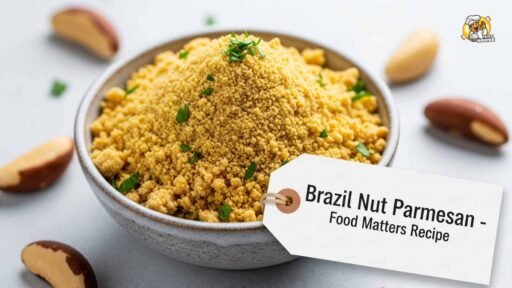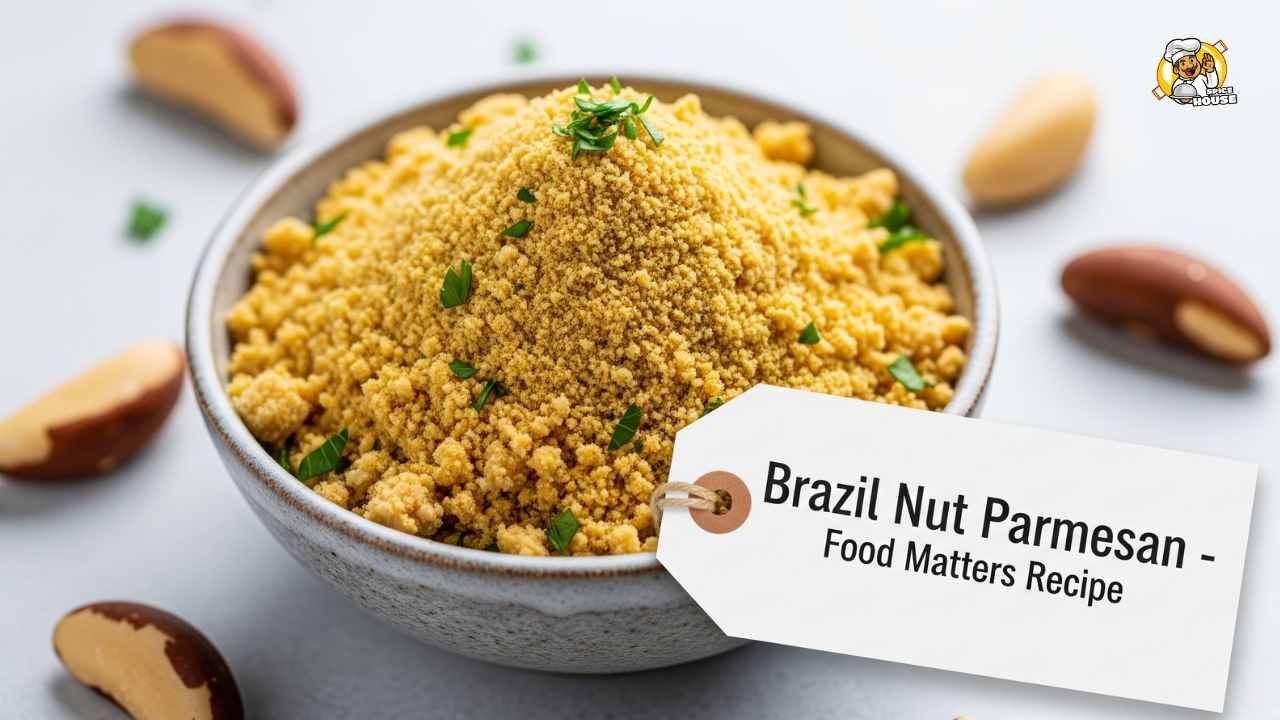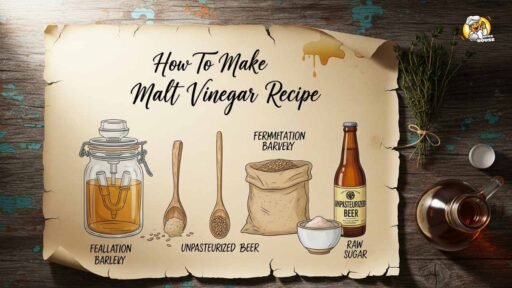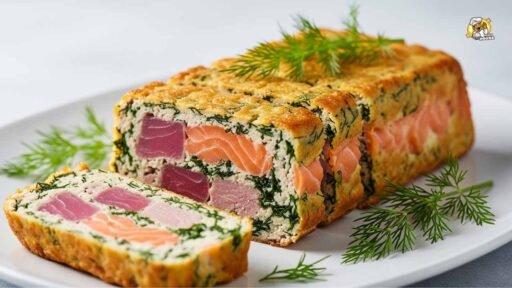Dairy-Free & Delicious: How to Make Brazil Nut Parmesan (Food Matters Recipe)
Brazil nut harvests across swaths of the Amazon fell as much as 70–80% in the latest season, with local prices in parts of Brazil nearly quadrupling in March 2025—an extreme swing that’s now rippling from forest communities to supermarket shelves and home kitchens alike. At the same time, the global plant-based cheese category is clocking in at about USD 2.41 billion in 2025 and compounding near 16% annually into 2030, so demand for nut-based “parmesan” shakers and DIY blends is not going anywhere—if anything, it’s accelerating.
Here’s the thing: a simple three-ingredient Food Matters Brazil Nut Parmesan recipe has gone from clever pantry hack to lightning rod for a bigger story about climate risk, price volatility, and nutrition nuance in plant-based eating, and that triangle affects investors betting on vegan cheese, consumers looking for clean, affordable staples, and the Amazon workers who collect, shell, and export the nuts behind the trend. This smells like a classic food-economy pinch—so while the recipe below is delightfully easy, the forces shaping what it costs (and who earns from it) are messy, contested, and, sources say, not done moving yet.
The Data
-
According to sector analysts, the non-dairy cheese market stands at USD 2.41 billion in 2025 and is expected to reach about USD 5.03 billion by 2030, implying a CAGR of roughly 15.85% as flexitarian habits and precision-fermentation R&D broaden the aisle.
-
In parts of the Amazon, communities report 70% to 80% harvest drops this cycle, and a standard 20-liter haul of Brazil nuts priced around 220 reais in March 2025—almost 4x typical local levels—after a severe El Niño-linked drought, a pattern that triages supply before it ever reaches export channels.
-
Nutrition-wise, one ounce of Brazil nuts contains about 544 micrograms of selenium—far above the adult RDA of 55 micrograms—so mindful portioning matters in any parmesan-style sprinkle, even when the recipe is used sparingly.
Recipe: Food Matters Brazil Nut Parmesan
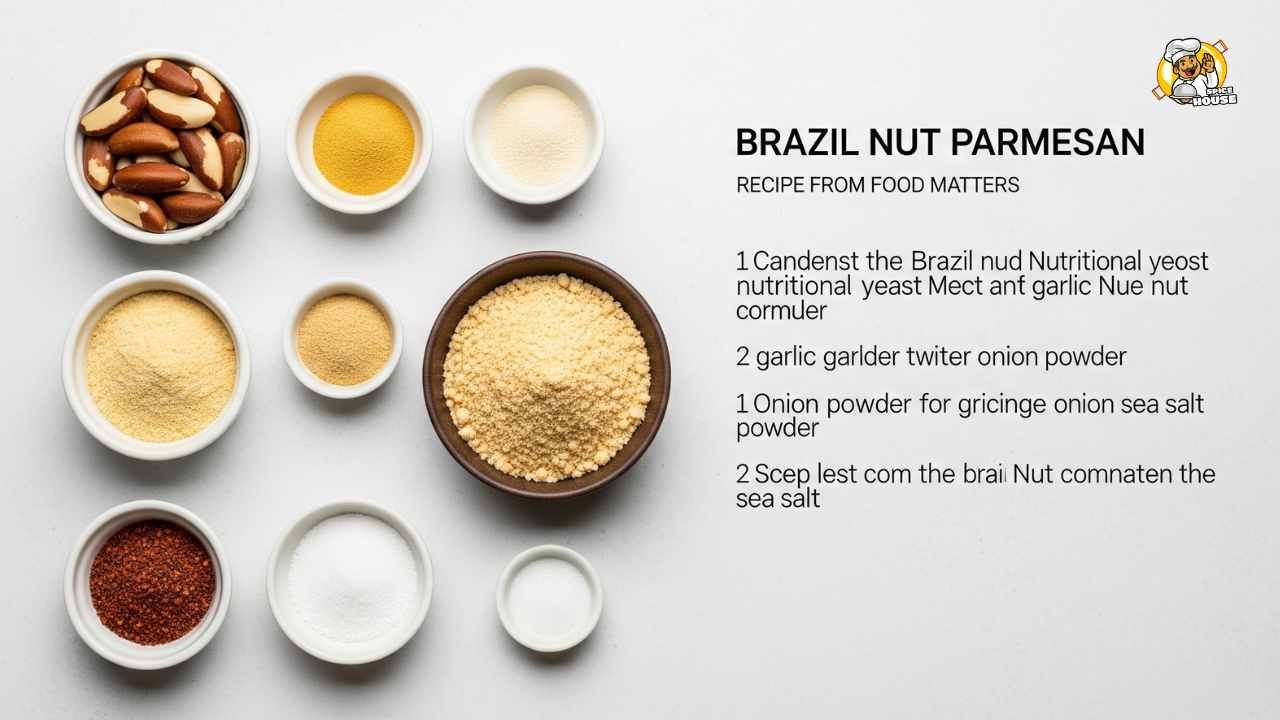
Ingredients and tools
-
Core formula (Food Matters): 1 cup whole, raw, activated Brazil nuts; ½ cup nutritional yeast; pinch of unrefined sea salt, plus a food processor or blender to bring it together in minutes as a dry, savory crumble.
-
Flavor add-ins (variations): Some cooks like a whisper of garlic or onion powder, which shows up in plant-based community riffs that keep the nut-to-yeast ratio roughly stable while nudging the aromatics for a parmesan-adjacent profile.
-
Yield and storage: Expect about 1 cup of finished “parmesan” and keep it in an airtight jar in the fridge for 2–3 weeks; the fat-rich nuts and dry crumb format make cold storage the safer bet for freshness and texture.
Method: Step-By-Step
-
Prep the base: Add the Brazil nuts, nutritional yeast, and a pinch of salt to a food processor or blender, then pulse in short bursts until the mix reaches a fine crumble—think sesame-seed-sized grains rather than a paste to keep the sprinkle effect.
-
Watch the grind: If the machine runs too long, the nuts release oils and the blend can clump, so aim for light, even bursts and a few pauses to scrape down the sides and keep the texture fluffy and “shakeable”.
-
Jar it right: Transfer to a dry, airtight container and refrigerate; cold storage preserves aroma and helps prevent off flavors from nut oxidation over the stated 2–3 week window, which is the practical shelf-life guideline from Food Matters for this specific crumb.
Flavor And Texture Tweaks
-
Savory lift: A small amount of garlic powder, onion powder, or extra nutritional yeast deepens umami and pushes the blend toward the sharp-salty parmesan note without changing the grind, as documented across multiple vegan recipe riffs.
-
Miso-based depth: A few community recipes incorporate mild miso for complexity, though miso’s moisture suggests caution—use only a small amount and pulse briefly to maintain a dry crumble, a technique home cooks have adapted to taste.
-
Color cues: A pinch of turmeric can brighten the hue for that familiar aged-cheese look in shaker jars, but keep additions modest to avoid shifting the flavor away from the nutty-savory base that defines this minimalist alternative.
Storage, Safety, and Portions
-
Keep it cold: The official Food Matters note is straightforward—store the crumble refrigerated and plan to enjoy it within 2–3 weeks to maintain the aroma and crisp crumble that makes it work on pasta, salads, and popcorn.
-
Selenium awareness: A single ounce of Brazil nuts provides about 544 micrograms of selenium, which exceeds the 55 microgram RDA many times over, so a light sprinkle goes a long way and is exactly how this recipe is meant to be used.
-
Variability matters: Selenium content can vary widely by origin and even within batches, which is why nutrition researchers flag both the benefits and the risk of excess; moderation in serving size is the simplest guardrail for daily use.
Serving Ideas and Use Cases
-
Classic sprinkle: Toss over warm pasta, pizza, or a hearty salad where the dry crumble meets steam and clings to the surface, delivering a savory hit that reads like aged cheese without the dairy or long ingredient lists.
-
Everyday boosters: Many home cooks shake it onto popcorn, tofu scrambles, or roasted vegetables as a finishing salt-meets-umami topping—small amounts deliver outsized flavor impact in hot or cold applications.
-
Program staple: Food Matters positions this Brazil Nut Parmesan as a staple inside its clean-eating program playbook, which aligns with its speedy prep time and minimalist ingredient deck.
Nutritional Context and Swaps (if needed)
-
Protein and fats: Brazil nuts bring plant protein and unsaturated fats to the table, and while this is a condiment—not a main protein—those nutrients support the overall profile of a plant-forward plate when used in moderation.
-
If Brazil nuts are scarce: Some community recipes lean on similar techniques with other nuts or seeds to maintain a dry, crumbled texture and umami backbone, though the exact “parmesan” flavor may tilt depending on the choice and spice adjustments.
-
Dietary fit: This shaker lands as a dairy-free, gluten-free finishing topper that relies on pantry staples and a blender, which explains its stickiness in plant-based meal rotations and quick weeknight cooking.
The People
“A 20-liter haul of nuts cost 220 reais in March 2025, almost four times higher than usual,” one Mongabay report documented, as communities across the Brazilian Amazon logged harvest declines of 70% to 80% tied to a severe El Niño drought. “The 2024/2025 Brazil nut crop has been significantly smaller than in previous years, primarily due to extreme weather conditions linked to climate change,” said Ralitsa Videnova.
A market research analyst at insights firm Vesper, in a food-industry briefing about shortages and price pressure. And on the nutrition front, mainstream guidance keeps it simple: “One Brazil nut per day could deliver enough selenium to support thyroid function,” a consumer explainer notes—useful framing for a condiment where a teaspoon or two is more than enough.
The Fallout
-
Supply chain strain: Bolivia exported 26,435 tons of Brazil nuts in 2022, worth about USD 198 million, with roughly 98% of production heading abroad—so when climatic events slash yields, it hits rural incomes and logistics long before it hits retail shelves.
-
Investor calculus: The category’s growth outlook remains strong at roughly 15.85% CAGR through 2030, but shortages raise input costs and compress margins, forcing brands to reconsider sourcing strategies and inventory hedges in nut-forward SKUs.
-
Conservation imperative: Brazil nut value chains are also a lever for forest protection; REDD+ projects centered on nut concessions in Peru’s Madre de Dios region support hundreds of families while aligning economic incentives with intact rainforest, a dynamic that becomes more fragile if harvests collapse.
Who Does It Affect Now
Consumers: Expect tighter availability and sticker shock in ready-made nut-based shakers and raw nuts, and plan for small-batch, make-at-home runs when deals pop up, which keeps waste low if prices swing back down.
Brands: Even if demand growth holds, smaller harvests plus logistical bottlenecks stretch working capital and erode promo cadence, a tough combination for plant-based portfolios that depend on sharp price points to recruit flexitarians.
Communities: In harvest zones, some Indigenous groups reported collecting a tiny fraction of the prior year’s bags—or none at all—erasing a key income stream and underscoring the need for drought-resilient planning and diversified rural livelihoods.
How To Connect Data To The Kitchen
A lean recipe hedges costs: Three ingredients, a cold jar, and two minutes of blending is the kind of complexity consumers keep even when prices wobble, which is why this Food Matters staple keeps showing up in plant-based rotation lists.
Mind the micronutrient: Because selenium is potent and variable, think “condiment math,” not entrée math—small sprinkles go far, and that makes the cost-per-serving (and nutrition-per-sprinkle) work even as raw inputs rise.
Portfolio reality: For brands, the math is trickier—rapid category growth meets variable nut supply, so the winners will blend reformulation agility with transparent sourcing and a plan B for when Amazon weather doesn’t cooperate.
Closing Thought
Will climate volatility push plant-based cheese players to diversify away from single-origin nuts—or will the next leg of growth come from precision-fermented “parmesan” analogs that smooth out the supply shocks hitting the Amazon’s most iconic nut?

